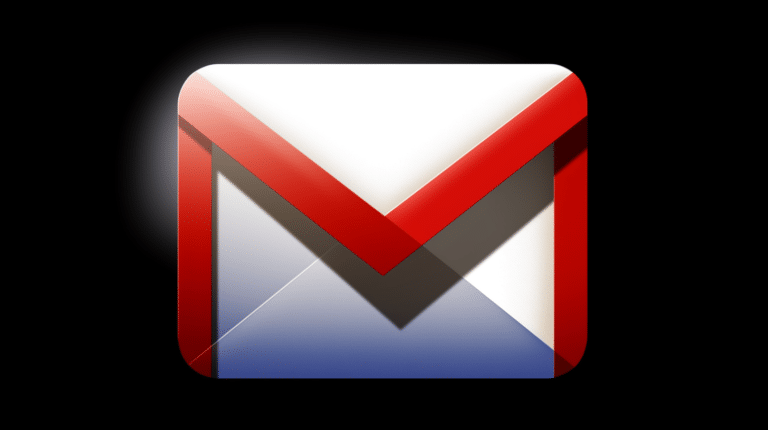The advent of artificial intelligence has transformed the way we interact with technology, and AI-powered chatbots like ChatGPT, developed by OpenAI, have redefined our approach to language processing and communication. As a cutting-edge generative language model, ChatGPT generates human-like responses and provides useful applications in various domains such as online support, content creation, and educational tutoring. However, concerns regarding its safety have also arisen, prompting questions about data privacy, potential biases, and other risks.
To address these concerns, it’s essential to examine the features and limitations of ChatGPT, exploring areas where privacy and data security implications play a significant role. With increasing awareness of online safety, it’s also crucial to recognize potential threats and discuss how we can protect ourselves when using such AI-powered tools. By comparing ChatGPT with its alternatives and looking into the future of generative AI, we can gain a clearer understanding of the model’s potential and the importance of responsible use.
Key Takeaways
- ChatGPT by OpenAI is an advanced language model with a range of applications, but concerns over safety need to be addressed.
- Assessing ChatGPT features, limitations, and data privacy is crucial for ensuring safety and responsible use.
- Understanding potential risks and exploring alternatives will help users navigate the evolving landscape of generative AI.
AI Chatbot Overview
Language Model
AI chatbots, like ChatGPT, are powered by advanced language models that enable them to understand and process natural language inputs from users. These models are trained on vast amounts of text data, allowing them to deliver coherent and contextually accurate responses. The language model forms the foundation of a chatbot’s ability to communicate effectively with users and provide a seamless conversational experience.
Generative AI
Generative AI, a subfield of artificial intelligence, focuses on generating new content based on existing data. In the context of chatbots, generative AI algorithms learn patterns from the training data to create context-appropriate responses to user inputs. This capability enables chatbots to simulate human-like conversations, making the interaction more natural and engaging for users.
Artificial Intelligence
Artificial intelligence (AI) is the broader field that encompasses language models and generative AI techniques. AI-powered chatbots utilize machine learning, deep learning, and other subdomains of AI to create a more interactive and dynamic conversational experience. With the ongoing advancements in AI, chatbots like ChatGPT are continuously evolving and becoming safer and more reliable conversational agents. However, it is essential to maintain vigilance in addressing potential safety concerns associated with AI chatbot technology.
ChatGPT Features and Limitations
Tasks
ChatGPT, a generative pre-trained transformer model, excels at various natural language processing tasks. These tasks include text generation, sentiment analysis, summarization, and conversation simulation. The model’s versatility makes it suitable for applications in industries like healthcare, finance, and education.
Accuracy
The accuracy of ChatGPT largely depends on the quality and diversity of data it has been trained on. Although it provides reasonable and reliable responses most of the time, there is no guarantee that its answers will always be correct. Continuous updates and improvements, like the transition from GPT-3 to the new language model GPT-4, aim to improve its accuracy and effectiveness.
Bias
As with any machine learning model, ChatGPT may contain biases present in the training data. These biases can result in the model producing output that reflects stereotypes or other unintended associations. Developers should be aware of this and implement necessary measures to mitigate and address the impact of biases in the generated responses.
Hallucinations
ChatGPT may generate content that seems realistic but is ultimately incorrect or doesn’t exist - these are known as hallucinations. These occurrences are partly due to the model’s inherent limitations and partly due to the dataset’s structure, which may contain false or exaggerated information. It is essential for users and developers to keep this limitation in mind while utilizing ChatGPT, especially for applications that require high levels of accuracy and reliability.
Privacy and Data Security
Privacy Policy
When using ChatGPT, it’s essential to understand the platform’s privacy policy. A comprehensive privacy policy should outline how your personal information is collected, used, shared, and protected. Make sure to review the policy to ensure your data is being handled appropriately by the platform, and they are committed to maintaining the highest standards of privacy.
Data Storage and Handling
Data storage and handling are critical aspects of data security in ChatGPT. The platform should follow best practices in encrypting and securely storing user data, which can include:
- Storing data in encrypted databases.
- Ensuring secure communication channels through encryption protocols.
- Monitoring the data centers for potential security risks and vulnerabilities.
By employing robust cybersecurity measures, ChatGPT can help protect users’ personal information and transaction history from potential threats.
Personal Data and Transactions
The usage of ChatGPT may involve the sharing of personal data and transaction history within the system. To minimize potential privacy risks and ensure secure data management, consider the following:
- Implementing access controls to regulate who can access and view personal data and transactions.
- Adhering to industry standards, like GDPR and CCPA, which provide guidelines for data handling and protection.
- Ensuring consent and transparency for data collection and usage.
Taking these steps can contribute to maintaining the privacy and security of user information while interacting with ChatGPT.
Potential Risks and Threats
Plagiarism and Misinformation
ChatGPT has the potential to generate text that may result in plagiarism and misinformation, especially if the input data is not verified or from reliable sources. This raises concerns about academic integrity and the spread of false information. Educators and users should be aware of these risks and implement plagiarism detection tools to minimize the impact.
Moreover, ChatGPT’s potential to create factually incorrect or misleading information can negatively affect decision-making and real-world outcomes. Ensuring that data fed into the model is accurate and comes from reputable sources can help in mitigating these risks.
Scams and Fraudulent Activity
With the growing capabilities of ChatGPT, there is an increasing risk of its use in scams and fraudulent activities. Cybercriminals could misuse the technology to create phishing emails or social engineering attacks, exploiting victims by impersonating trusted entities. Users should be vigilant and employ critical thinking when interacting with messages or content generated by AI models like ChatGPT.
Cybersecurity Measures
As ChatGPT becomes more integrated into various platforms, cybersecurity measures should be employed to protect user privacy and data. Developers and organizations leveraging the technology must prioritize safety and security to safeguard users from potential threats.
Implementing robust encryption standards, adopting secure coding practices, and monitoring AI-generated content for anomalies are some of the essential precautions that should be in place. By taking these measures, organizations can minimize risks to users and prevent unauthorized access to sensitive data.
Protecting Yourself Online
When using the internet and Chat GPT, it is important to protect your privacy and security. This section will discuss ways to protect yourself online, including using VPNs and password managers, avoiding inaccurate and biased content, and handling phishing emails and spam.
Using VPN and Password Managers
A Virtual Private Network (VPN) can protect your internet access by encrypting your data and masking your IP address. This makes it harder for malicious actors or monitoring entities to track your activities. Using a VPN is essential when accessing Chat GPT or any other services requiring a secure connection.
Password managers can help you create and store strong, unique passwords for all your accounts. By using password managers, you reduce the risk of unauthorized access to your accounts due to password reuse or weak passwords.
Avoiding Inaccurate and Biased Content
With the vast amount of information available online, it’s crucial to discern between accurate, unbiased content and misleading or false information. To ensure you receive reliable information from Chat GPT:
- Use critical thinking skills to evaluate content
- Cross-reference information with reputable sources
- Verify the credibility of sources used, ensuring they are trustworthy and up-to-date
Staying vigilant in avoiding biased content helps ensure a more accurate and productive Chat GPT experience.
Handling Phishing Emails and Spam
Phishing emails are deceptive messages designed to trick users into revealing sensitive information. They often impersonate reputable organizations or individuals, making them difficult to identify. To stay safe from phishing emails:
- Verify the sender’s email address and domain name
- Be cautious of unsolicited emails asking for personal or financial information
- Hover over links before clicking to check their destination
Spam refers to unwanted, unsolicited emails, which can also pose security risks. To minimize the impact of spam:
- Use spam filters provided by your email service
- Never click on suspicious links or open attachments from unknown sources
- Report spam emails to help improve filtering algorithms
By implementing these practices, you can enhance your online security while using Chat GPT and other internet resources.
ChatGPT Alternatives and Competitors
Google, Apple, and Samsung are key players offering their own chatbot solutions, which can be considered as alternatives or competitors to ChatGPT. These tech giants have significantly invested in artificial intelligence, and they provide advanced language processing and understanding technologies.
Google offers Dialogflow, a natural language understanding (NLU) platform that comes with machine learning capabilities. It is a popular choice for businesses looking to build customized conversational agents. Dialogflow allows developers to create chatbots that can seamlessly integrate with various platforms, ensuring a consistent user experience across different channels.
Apple has also developed Siri, an intelligent personal assistant, which uses advanced natural language understanding to provide users with relevant responses. While Siri caters mainly to Apple devices, developers can leverage SiriKit to design custom-integrated chat experiences for their apps, allowing iOS users to interact with businesses through Siri.
Samsung provides its Bixby virtual assistant that understands natural language and offers personalized experiences for users. Bixby has seen continuous improvements over the years, and Samsung encourages developers to utilize the Bixby Developer Studio to create custom capsules for incorporating their services into Bixby.
Other chatbot solutions include Bing Chat, which is part of Microsoft’s Cognitive Services suite. Bing Chat leverages the Microsoft Bot Framework for building, connecting, and deploying chatbots across various platforms such as websites, social media, and messaging apps.
With a multitude of ChatGPT alternatives available, businesses can carefully evaluate their specific needs and choose the solution that aligns best with their requirements. Key factors to consider include integration capabilities, scalability, data protection, and the ability to provide a seamless and satisfactory user experience.
The Future of ChatGPT and Generative AI
GPT-4 and Beyond
As the technology behind language models such as the Generative Pre-trained Transformer (GPT) continues to advance, we can expect further improvements to AI-powered conversation platforms such as ChatGPT. The highly anticipated GPT-4, which is currently still under development, aims to build upon the successes of its predecessors while addressing crucial issues like safety and reliability.
Notable figures, including Sam Altman and Elon Musk, demonstrate a keen interest in AI advancements, which highlights the importance of the development of large language models (LLMs) like GPT-4. With the release of GPT-4, we can anticipate improvements in the ability of AI models to understand complex context and provide more accurate and useful responses. This will potentially lead to a greater variety of applications for AI, including creative content generation and more seamless user experiences.
Industry Innovations
OpenAI’s ChatGPT Plus subscription service is a sign of AI’s increasing influence and utility in various industries. Offering users enhanced functionality and access to cutting-edge AI technologies, ChatGPT Plus aims to pave the way for innovative applications in fields like healthcare services, customer support, and content creation.
With the scalability and adaptability of AI systems like ChatGPT, we can expect a surge in industry-specific solutions tailored to unique use-cases. As a result, AI-driven platforms will play an essential role in streamlining workflows, enhancing efficiency, and creating opportunities for businesses and individuals alike.
In summary, the future of ChatGPT and generative AI promises exciting advancements as emerging technologies like GPT-4 reshape the landscape of AI applications. Industry innovations, such as ChatGPT Plus, are only the beginning, laying the foundation for a transformative era powered by large language models and revolutionary AI systems.
Frequently Asked Questions
What are the risks of using ChatGPT?
ChatGPT’s accuracy and safety depend on the quality of its training data and the nature of the input queries. There is a possibility that ChatGPT might generate incorrect or misleading information. It is important to verify any critical information generated by ChatGPT with credible sources. For example, a study focusing on breast augmentation evaluated the efficacy of ChatGPT for answering frequently asked questions in plastic surgery.
Does ChatGPT store my data?
Typically, these models store input data temporarily for a short period to improve performance and address potential issues. It is crucial to review the specific privacy policy of the ChatGPT service you’re using to understand their data usage and storage policies.
Is ChatGPT safe to use on my phone?
ChatGPT can be safely used on your phone as long as you’re using a reliable app or web service offering ChatGPT functionality. However, it is essential to keep your mobile device’s operating system, apps, and security measures updated to minimize any potential risks.
Are there any privacy concerns with ChatGPT?
Privacy concerns might arise if ChatGPT services are used to discuss sensitive information or share personally identifiable information (PII). It’s advisable to limit sharing personal, financial or sensitive information when interacting with ChatGPT to maintain privacy.
Is ChatGPT secure from security risks?
ChatGPT’s security depends on the service provider hosting it, the quality of their infrastructure, and the security measures they employ. Always choose reputable service providers when using ChatGPT to ensure maximum security.
Is it safe to use ChatGPT at work?
Before using ChatGPT at work, it is important to review and adhere to your organization’s security policies, and consider potential risks and compliance requirements. In general, avoid discussing confidential, proprietary, or sensitive information via ChatGPT, as it might store that data, even temporarily.






